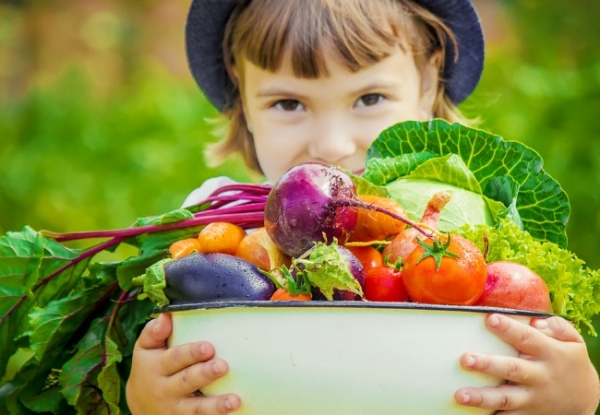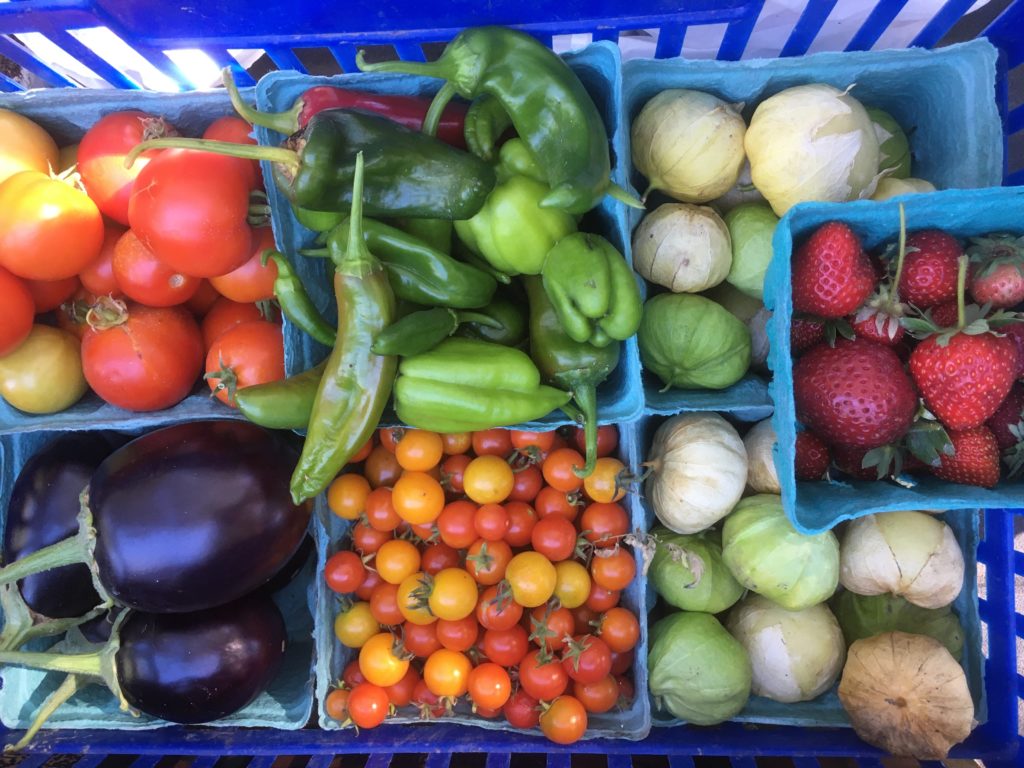Written by Zoee Tanner, Education and Curriculum Development Intern
It’s the age-old parental predicament- how do we engage our children in eating habits that promote their health? Essentially, how can we undo the frown children typically make when presented with the prospect of eating a bite of broccoli? This may seem daunting, but it’s absolutely possible to set children up for success in healthy eating habits before these behaviors become a challenge as well as cultivate their own unique appreciation for fresh, whole foods. It first starts with understanding the difference between children, adolescents, and adults and the way we engage with food and taste.

While at times children may seem to be 6 going on 16, their taste palate is not. Just as their bones and muscles are growing, so is their sense of taste. It is easy to assume that taste is just a fixed part of a person, however a children’s likes and dislikes when it comes to food is very much tied to their physiology. Generally, though there are exceptions, children have a natural tendency to prefer sweet tasting food over bitter tasting food as discussed by Mennella and Bobowski in their article, “The Sweetness and Bitterness of Childhood: Insights from Basic Research on Taste Preferences.” This innate tendency has more to do with survival instincts than early food choices as mother’s breast milk is generally sweeter. Thus a desire for sweetness pushes an infant towards breast milk for their very survival. While still being studied and speculated upon, it is believed that children retain their desire for sweetness as a means for getting higher calorie food sources needed for growth spurts. With this, as their growth slows their desire for sweetness also declines (Mennella and Bobowski). In addition, Mennella and Bobowski touch on how an aversion to bitter foods is also a primal means for promoting survival as many times unsafe or otherwise poisonous substances have a bitter taste. In this way, a sensitivity to bitter taste is like a warning alarm for children who don’t yet have the awareness to distinguish between safe food choices. With this knowledge in mind, it makes sense that children may not immediately jump at the thought of eating kale or be skeptical of foods that don’t immediately taste good to them. Moreover, living in an environment with an abundance of sugar-laden processed foods and lack of exposure to a variety of produce, it is not surprising that children today tend to gravitate towards an overconsumption of these foods and become lacking in their awareness of and preference for nutritious produce. So how can we engage children in healthy eating habits while acknowledging the current food climate and that they may not be inclined to love all vegetables?

One technique can be to increase a children’s awareness of foods through food exploration. This strategy in education can be time-consuming which not all parents/guardians are able to do, however even small steps in this technique can have potential for success. While taste is a fairly dominating presence in a child’s preference for a food, the choice to try a new food actually engages many of their senses. The texture, sound, sight, smell, and touch of a food are all part of the process of exposure to a new food as well as contributing factors to why a child may not consume a food as discussed by Dazeley and Houston-Price in their article, “Exposure to foods’ non-taste sensory properties. A nursery intervention to increase children’s willingness to try fruit and vegetables.” With this in mind, the implementation of repeated non-taste sensory exposure to a variety of fruits and vegetables may help children adjust to certain foods they may otherwise turn away from initially. In their 2015 study conducted with preschool-age children, Dazeley and Houston-Price found that non-taste sensory exposure to fruits and vegetables actually improved a child’s willingness to try that food later on. This non-sensory exposure can look like sounding out the name of a vegetable, learning about the vegetable such as how it is grown, and touching the vegetable without the premise that the child must eat it first as described by Nekitsing et al. in their 2018 article, “Developing Healthy Food Preferences in Preschool Children Through Taste Exposure, Sensory Learning, and Nutrition Education.” It is through this safe encouragement of the exploration of food beyond just taste that children can become comfortable with being food explorers and in turn be more open to consuming health promoting foods.
Another technique is to connect with children in the food-making process. Encouraging children to get involved in the making and growing of their food alongside adults and/or peers while learning about the fresh, whole ingredients and their nutritional benefit may help children connect more with their foods again outside of just a food’s taste as well as build an understanding of how their health and food are intertwined. In their 2016 study, “An Experiential Cooking and Nutrition Education Program Increases Cooking Self-Efficacy and Vegetable Consumption in Children in Grades 3–8”, Jarpe-Ratner et al. found that among third through eighth grade children conducting a nutrition education program alongside experimental cooking bettered children’s nutrition knowledge as well as increased their vegetable consumption. Promoting this interconnectedness through hands-on cooking demos or working in a community garden can develop a children’s appreciation for food on a level beyond just consumption. This experimentation can occur with parents/guardians inside the home or through nutrition education programs in school, however the study by Jarpe et. al points to the importance of school nutrition education programs in bolstering children’s food appreciation and healthy eating habits.
Cultivating a food-first mindset in children is absolutely possible through encouraging food exploration and creating food connections through experimentation. Though this list is not exhaustive and studies are constantly being conducted to better understand children and their food choices, these techniques are a step in the right direction for bettering children’s nutrition. It is important to note the importance of exposure to both of these techniques in that both require the presence of whole foods in the first place. With that, the accessibility of whole, fresh foods to children is of the greatest importance to having success in building positive nutrition habits. Thus it is attainable for children to have food-first mindsets, however we must also put access to fresh, whole foods first.
Sources:
Dazeley, Paul and Houston-Price, Carmel. “Exposure to foods’ non-taste sensory properties. A nursery intervention to increase children’s willingness to try fruit and vegetables” Appetite, vol. 84, 1 Jan. 2015, pp. 1-6. https://doi.org/10.1016/j.appet.2014.08.040. Accessed 29 Sept. 2020.
Jarpe-Ratner, Elizabeth, et al. “An Experiential Cooking and Nutrition Education Program Increases Cooking Self-Efficacy and Vegetable Consumption in Children in Grades 3–8” Journal of Nutrition Education and Behavior, vol. 48, no. 10, 2016, pp. 697-705. https://doi.org/10.1016/j.jneb.2016.07.021. Accessed 2 Oct. 2020.
Mennella, Julie A., and Bobowski, Nuala K. “The Sweetness and Bitterness of Childhood: Insights from Basic Research on Taste Preferences.” Physiology & Behavior, vol. 152, 20 May 2015, pp. 502-7. doi:10.1016/j.physbeh.2015.05.015. Accessed 29 Sept. 2020.
Nekitsing, Chandani, et al. “Developing Healthy Food Preferences in Preschool Children Through Taste Exposure, Sensory Learning, and Nutrition Education.” Current Obesity Reports, vol. 7, no. 1, 14 Feb. 2018, pp. 60-67. doi:10.1007/s13679-018-0297-8. Accessed 2 Oct. 2020.



1 Comment
Brianna · October 24, 2020 at 6:49 pm
I love this! I love that so much of the info can apply to kids of all ages! Keep up the good work guys and gals!